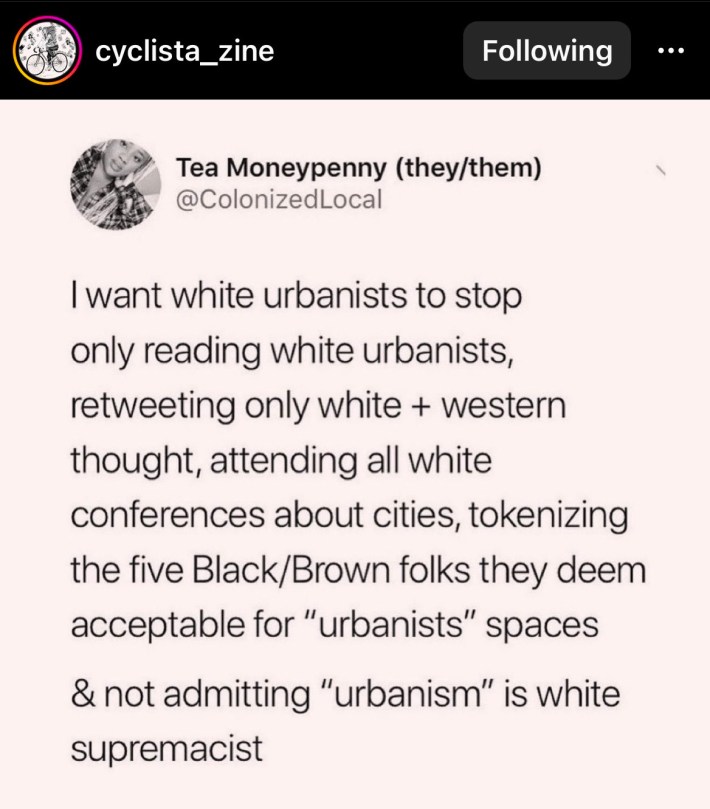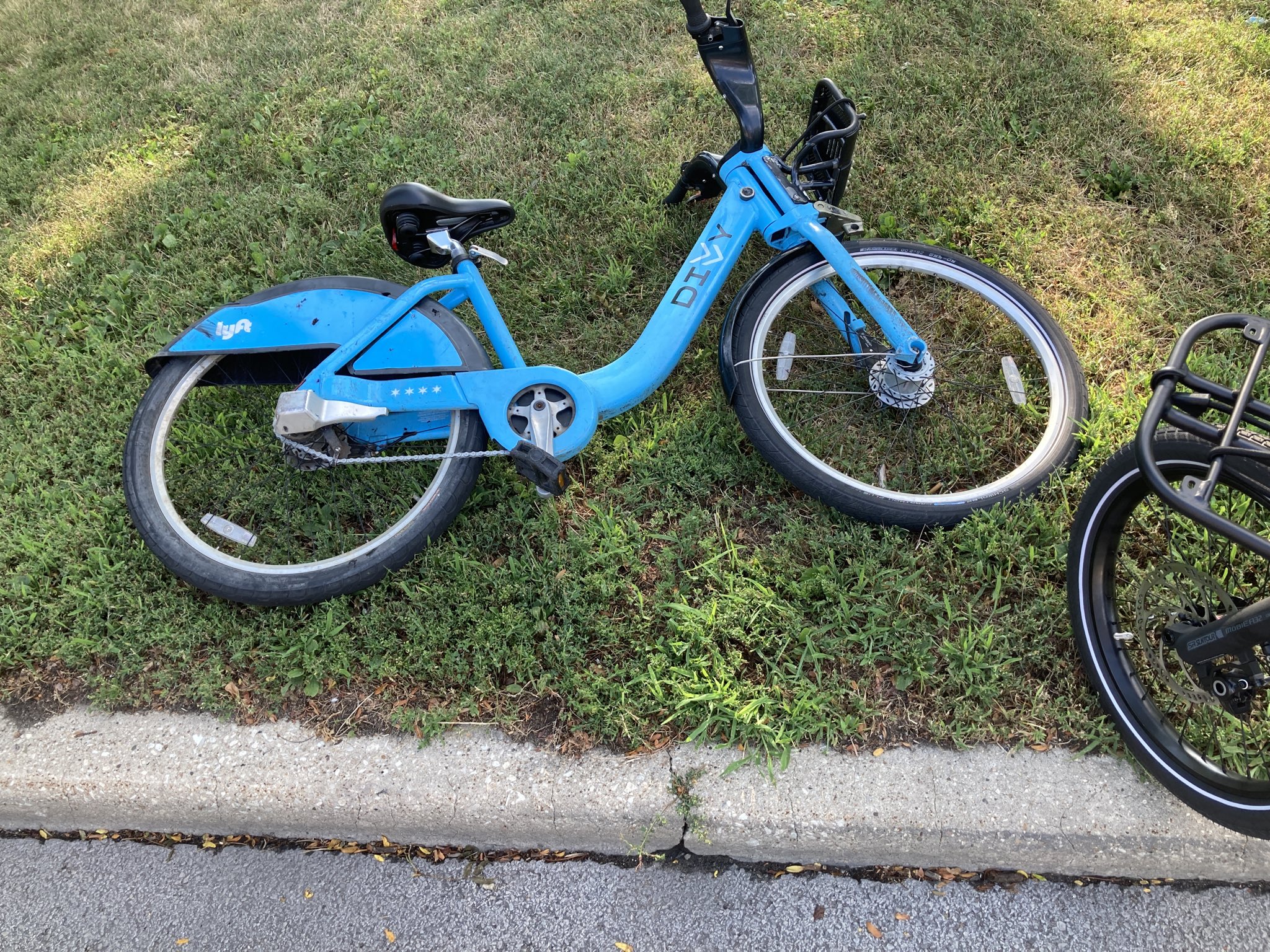I began writing this on a Friday evening with a headache and sore throat after screaming at multiple drivers. The last incident had me fearing for my life. As I was biking home along Greenview in Rogers Park, between Morse and Lunt, I noticed a driver driving in the middle of the street. I flash my hands over my bike’s headlamp hoping the driver would realize there's someone else on the road. Instead of moving over, the driver continues and comes close enough for me to touch the hood of her car. I see her eyes and for a second I think, “It's over”. After coming frighteningly close to seriously injuring me or killing me, the driver swerved at the last second. She rolls down her window and yells something at me. I don't hear it and I'm too frightened or numb to emotionally react.
While the particulars of this incident are rare for me, near misses, observing driver behavior that puts people at risk, and being on the receiving end of driver harassment is not new. In my experience of speaking with cyclists in my everyday comings and goings, many who bike in Chicago agree that drivers are out of control and constantly put us at risk. I’ve experienced harassment from drivers so intense that I’m sure it would put even the most casual cyclist off biking forever if not for quite some time. Not everyone has the thick skin required to ride a bike within most American cities and it’s a shame tough skin or a resilience against frequent close calls and harassment is even necessary.
Half of all car trips within the city of Chicago are under 3 miles with nearly a quarter of trips less than 2 miles according to a study conducted by a transportation analytics company, INRX . I think about the vehicular harassment I’ve faced within close distance of my home and surely there has to be a correlation with people choosing to use a car for short trips. Along with the current issue of ghost CTA buses and trains, driving becomes even more appealing. At the same time, U.S. emissions rose as vehicle miles traveled increased in 2022. Despite the numerous city plans that set a goal to reduce private car usage and increase active and sustainable transportation use, I’m not seeing a sense of urgency around creating safe biking conditions or speedier transit within the city.
Earlier that same Friday evening I observed drivers flying through the traffic light at Leland and Broadway. As I saw drivers fly by a 20 mph sign along the stretch Lily Shambrook was killed, I asked myself when Chicago as a city will do right by the numerous victims of traffic violence. I am livid the intersections where Lily Shambrook,Rafi Cardenas, Peter Paquette, Angela Short, Concepcion Lopez, and many others were killed due to traffic crashes remain unchanged. Nearly 3 years ago I wrote about the need for a rapid response team for traffic crashes; the need still exists. How many more people need to be seriously injured and killed before Chicago decides to substantively deal with the issue of traffic violence?
I’m aware that frequent harassment and daily close calls isn’t the experience of every cyclist in Chicago. In my experience, the people who have told me they don’t experience much or any harassment while biking have been white men. These same people tend to oppose protected bike lanes because the status quo of painted lanes, sharrows, and a lack of protected bike lanes is working fine for them. Luckily the chorus of calls for protected bike lanes and other necessary measures to create a safe and comfortable biking environment are growing louder. While those calls grow louder, I hope the makeup of those voices begins to become more racially and socioeconomically diverse. For me, it’s not enough for white bike advocates to support a citywide network of protected bike lanes. What good are protected bike lanes if residents struggle to live next to them due to a lack of affordable housing and a lack of jobs? What good are protected bike lanes if Black and Brown Chicagoans feel more vulnerable to police harassment or interpersonal violence? Yes the infrastructure on our streets matters and so does the quality of life of the people who traverse those streets. We have to look beyond bike lanes and ask how we can all show up for racial justice and equity within this city.
If you're interested in educating yourself on issues of racial equity as it relates to mobility justice and urban development, I encourage you to check out Cyclista Zine's Bookshop recommended reading list. Cyclista Zine is an intersectional feminist bi annual zine that uplifts the voices of Black, Brown, and Indigenous people along with the voices of women, trans people, and femmes. I was recently scrolling their Instagram feed and felt the following image was fitting. The caption for the post includes a list of recommended texts focusing on race and justice in city planning and urban design.





